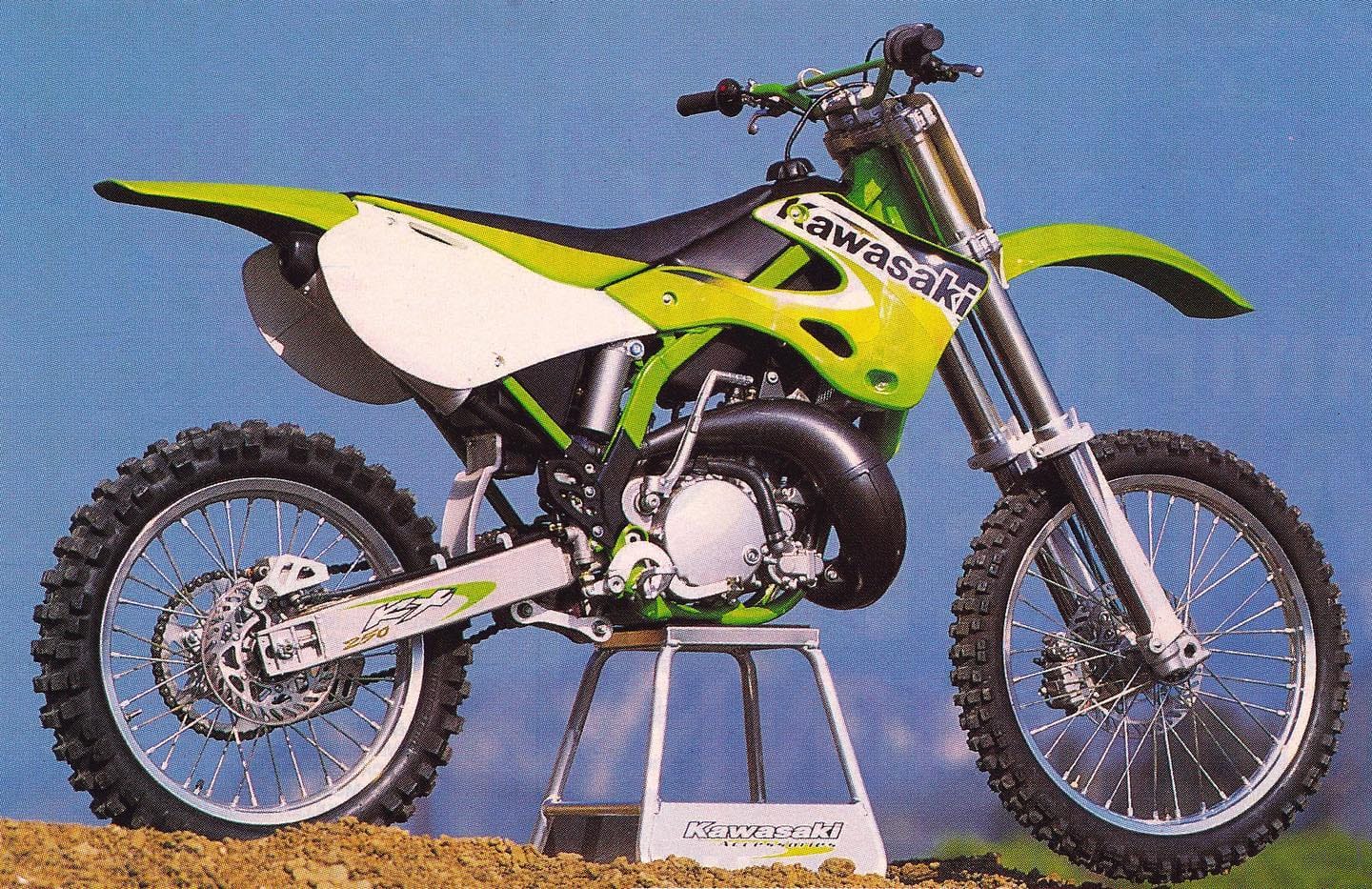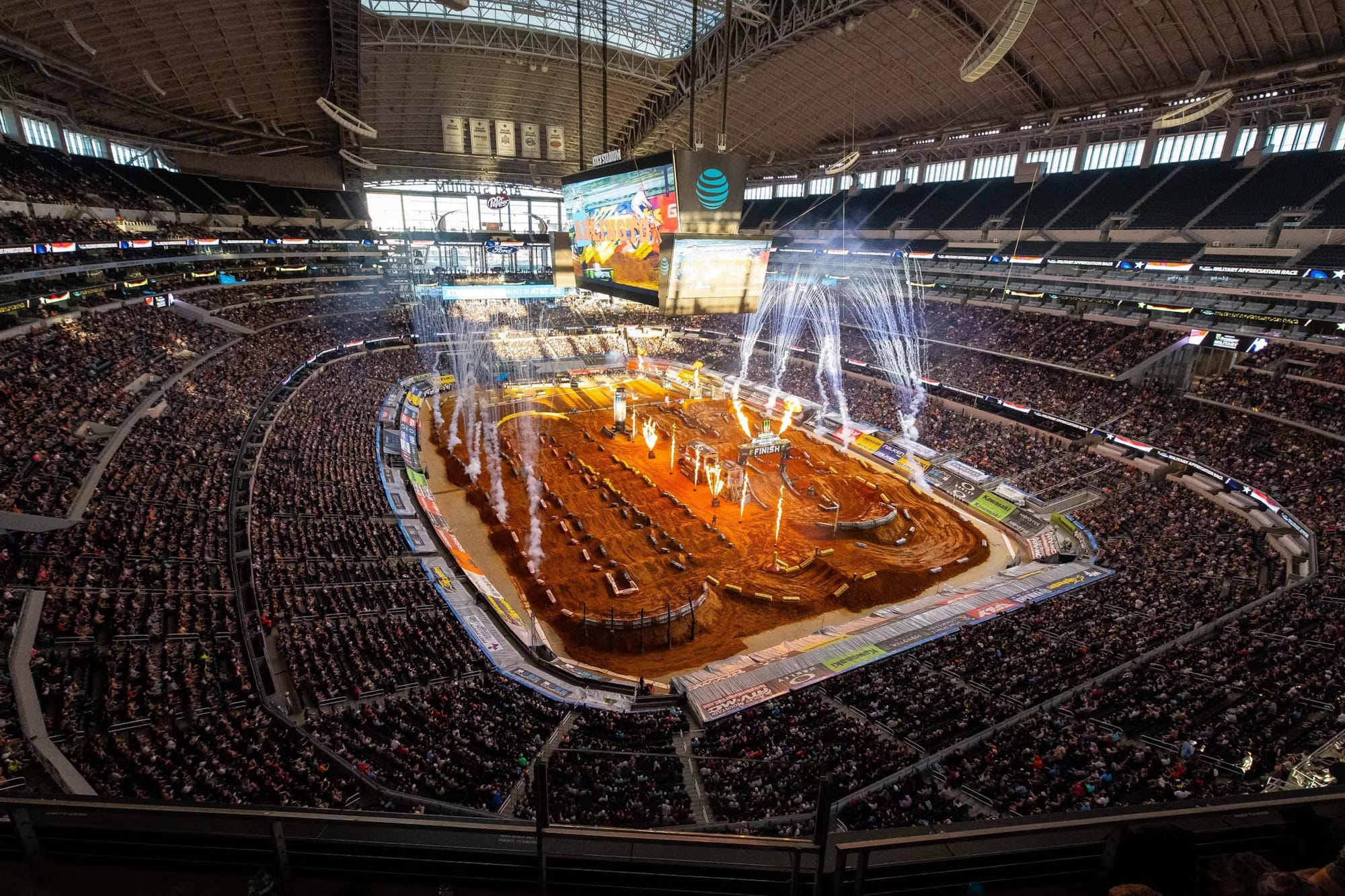An Ode to My Favorite Sport

Dirt bike racing is the gnarliest sport in the world. Essentially, it's a form of racing where the goal is to wrangle a 240 pound engine-on-wheels without an eject button, lugging around 30 pounds of extra gear that is far from a safety guarantee, all the while trying to stay smooth and consistent through deep ruts, big jumps, and managing a heart rate that quickly approaches 180 bpm–and stays there.
Sound insane? It is.
Looking past the inherent madness reveals an incredibly storied action sport: From iconic venues that have been around since the grassroots of motocross, to the legends of past and present who have built the sport into what it is today through blood, sweat, and tears. It is a sport with the highest highs and the lowest lows, a testament to our ability to overcome adversity–and incredibly fun to watch.
In My DNA
Motocross has always been a niche family sport. I was introduced to it because my dad raced–the same way he was introduced to the sport as a kid. Some of my earliest memories involve bikes. I remember wandering around the garage as my dad changed the filter on his early 2000s Kawasaki 250 two-stroke. Back then I just knew that it was lime green and really cool.

I remember how it felt when I ran downstairs on Christmas morning at age six to find my first bike (the blue one with the training wheels in that throwback pic from my last post) next to the tree with a whole gear set. Boy was I excited. My dad took me outside–and I rode it right into a fence the first chance I got. From then on I was obsessed. My life was school, playing MX Unleashed on my playstation, riding dirt bikes at the track on Saturdays, and watching my hero Ricky Carmichael dominate the professional scene on Saturday nights.
It wasn't long until the injury bug bit me. I was practicing for my 2nd race ever one night when I crashed on the landing of a jump, then got landed on by another kid. I was laid up for several months while the fractures in my leg and foot healed.
Long story short, I didn't get back into riding until I was a teenager. I stepped back into the sport on an 85cc–a very different experience compared to my little Yamaha that I found under the Christmas tree in 2004. My 85 was more complex: It had full suspension (for jumping), a manual transmission, and a LOT more speed. Pretty soon I was hitting 30 foot jumps and railing corners so fast that it scared me.
It's been about a decade since I've swung a leg over a dirt bike, something I'd like to rectify. Though I haven't ridden in awhile, I still keep up with the professional scene religiously. I owe so much to this sport for making me into the person I am today. It's solidified itself into my DNA, and I wouldn't change that for the world.
Two Disciplines
There are two primary disciplines in professional dirt bike racing: Motocross and Supercross. Supercross takes place from the first weekend of January through May. Then, riders line up at the gate for a long, blistering summer in the pro motocross circuit.
Motocross
The grassroots. Motocross is family. It's waking up at 6 AM on a Saturday to load the bikes into the back of your dad's truck. It's driving multiple hours to the middle of nowhere–some single lane state road that leads to an unmarked, bumpy dirt road in Florida that eventually leads to a motocross track; the entrance is an old cattle gate where a sweet moto mom takes $20 from you and gives you a neon wristband–yellow for spectator, green for rider. Motocross is thirty minute motos in the summer heat, the roar of a two-stroke engine in your ears as you hit a big double in fourth gear pinned.
Anybody who is anybody in this sport knows these niche routines. The local motocross track that barely scrapes by is where everyone learns the fundamentals of riding a dirt bike.
In the professional scene, motocross is a trial of sheer will. The pros race from May to August in sweltering temperatures. Lap times are long (about 2 minutes), the speeds are very high (70-80 mph), and the tracks are extremely rough and rutted. The day consists of two 30 minute motos for each class (250cc and 450cc). Some riders thrive in the heat–many champions have been crowned on sheer endurance alone.

Supercross
Enter the flashing lights and stardom. Popularized by 7-time SX Champion Jeremy McGrath who dominated the sport in the 90s, Supercross is where all the fame and the glory lies. The tracks are built in stadiums, where lap times are anywhere from 50 seconds to 1 minute long. Supercross tracks are tighter and more technical, with complex jump lanes called rhythm sections–and the infamous whoop section, of course (tightly-packed ridges that riders must skim across).
Most of the money in the sport is tied up in supercross. Riders battle over 17 rounds to decide who will be crowned champion. It is a test of wit, endurance, bike skill, and mental fortitude that only a select few have surmounted. The margin for error is incredibly small, and the risks are incredibly high–a treacherous balancing act where pros try to thread the needle between glory and disaster.
A Promising Next Generation
The sport is undergoing a changing of the guard. Many legends of the 2010s like Eli "Beast Mode" Tomac and the German sensation Ken Roczen will be sailing off into the sunset in the next few years, passing the torch to the likes of Chase Sexton and Jett Lawrence, the generational phenom who won 22 of 22 motos in his debut motocross season in the premier class last year. The riders of today are brimming with talent and bike skill; the bar is higher than ever. They stand on the shoulders of giants–the likes of Ricky Carmichael, the GOAT with an astounding 15 titles between Supercross and Motocross; Jeremy McGrath, the King of Supercross who blessed the sport with style and stardom.
I am excited for the direction moto is heading. With a newly introduced playoff system that brings with it a prize pool of $10 million, the sport is becoming more popular than ever. The internet has made it possible for people like me to share the sport with the world, and more and more join that mission each day. The future looks bright for moto, and the past is teeming with incredible storylines of athletic greatness and admirable tales of overcoming adversity.
You never know what's going to happen until the gate drops on Saturday. 🤙
Till next time,
Ethan Mark






